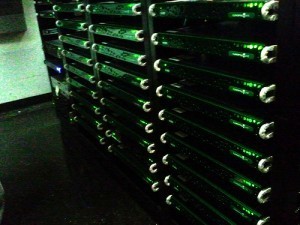Harmonic Inc. today announced the ProMedia family of software solutions that optimize live and file-based multiscreen video production and processing for content and service providers. The ProMedia family performs a broad range of functions, including transcoding, packaging, and origination to enable high- quality video creation and delivery of live streaming, live-to-VOD, and VOD services to TVs, PCs, tablets, smartphones, and other IP-connected devices. ProMedia is also an ideal solution for content creation in file-based workflows such as tapeless production environments.
The ProMedia family includes four software products:
- ProMedia Live is a real-time video processing and transcoding system
- Powered by Rhozet technology, ProMedia Carbon (formerly Carbon Coder) is a file-based transcoder that supports the largest array of acquisition, editing, broadcast, Web, and mobile formats in the industry. The system scales from a single instance to a large automated multinode transcoding farm.
- ProMedia Package is a carrier-grade adaptive streaming preparation system for secure, high-value Internet video services. ProMedia Package supports numerous HTTP streaming protocol standards and is capable of packaging in multiple output formats from a single video source, enabling a more scalable, distributed architecture.
- ProMedia Origin is an HTTP and RTMP streaming video server ideal for originating a broad range of multiscreen services in a scalable, easy-to-manage, carrier-class platform.
Control and management can be handled by Harmonic NMX Digital Service Manager or a Web-based GUI for real-time services.
 Your new post is loading...
Your new post is loading...
 Your new post is loading...
Your new post is loading...





![Imagine Communications Releases Unified Platform Upgrade for IPTV and Multiscreen Transcoding [PR] | Video Breakthroughs | Scoop.it](https://img.scoop.it/AiTj5LxIXxw_nrw3UWywgzl72eJkfbmt4t8yenImKBVvK0kTmF0xjctABnaLJIm9)











Le replay du webinar est visible en ligne :
http://web.dbee.com/dbee/20121218/index.php